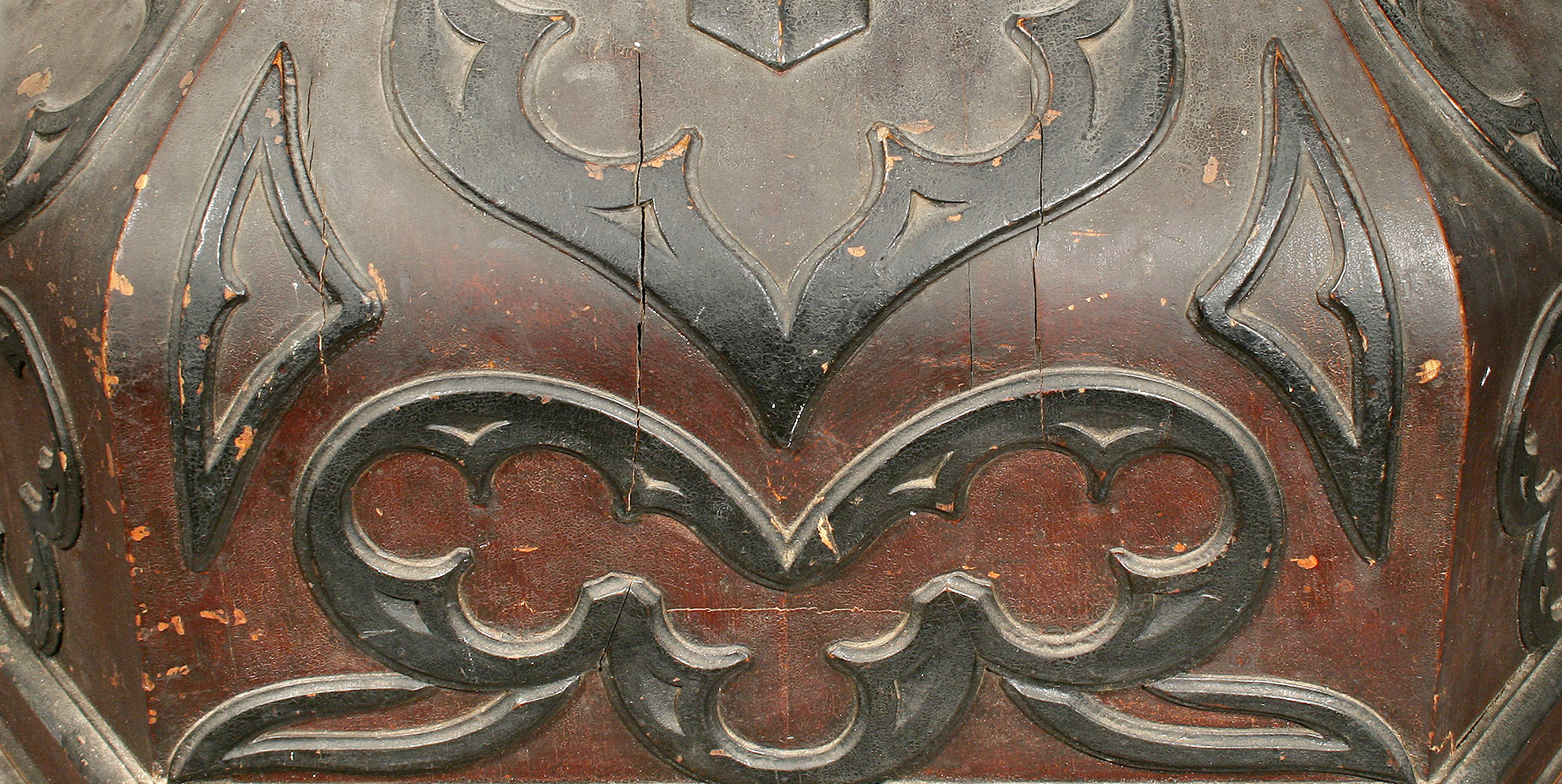Watch for Temperature & Humidity
Moving a piece poses clear danger to antiques. However, poor choice of environment – where pieces are stored or placed – can bring greater catastrophe. Environmental damage often occurs insidiously and affects the entire piece - rather than localized areas - making treatment more difficult.
Dramatic fluctuations in temperature and humidity are more structurally damaging to antiques than any other environmental element. When controlling environment, consider humidity and temperature as both separate elements and in combination with each other. Extreme temperature alone damages antiques. Materials can expand and contract, leading to delaminating layers and loosened joints. Heat accelerates alterations in chemically unstable items, like photographs and works on paper. But when humidity enters the picture, the situation becomes dire.
Humidity
To understand the effects of humidity, we must define some terms:
Humidity: the amount of water vapor in the air
Absolute Humidity: the actual amount of humidity in the air independent of temperature
Relative Humidity (RH): the percentage of humidity in the air compared to what air can hold at 100 percent (full saturation) at a given temperature. Warmer air can hold more humidity.
You don’t need an increase of moisture in an environment to affect sensitive material. A drop in temperature will cause air to hold less moisture. If there is excess moisture in the air when that temperature drops, the moisture needs to go somewhere…which may be a framed painting, a work on paper, or porous wood or other furniture and art objects.
Most organic materials absorb moisture. If the environment fluctuates between hot and cold, those organic materials will expand and contract as moisture is accepted and lost. Because objects are typically not made from a single lump of material, different parts of a piece will vary in rates of expansion and contraction. Joints loosen, wood warps, veneers and Boulle work pop off, paint, finishes, gesso and gilding detaches, metals tarnish and rust. This can occur daily, weekly, or seasonally.
Unfortunately, no “perfect level” of humidity exists. Different materials have different reactions. Consider an ivory-handled steel knife. The ivory starts drying and cracking below 50% RH, yet the steel starts to rust at levels above 50% RH.
High RH (over 70%) accelerates rusting, tarnishing, bronze disease, and chemical deterioration. It increases potency of air pollution, extent of warping, and development of mold.
Low RH (below 30%) accelerates shrinkage and brittleness, causing fragility.
Monitoring and controlling RH will always be a balancing act - particularly in Chicago’s challenging climate. Thinking ahead is often the best defense. Review the following tips and remember this rule of thumb:
Antiques incur the worst problems when humidity suddenly shifts from extreme lows to extreme highs. Allowing for gradual fluctuation can make a world of difference.
Tips to minimize effects of relative humidity
Monitor environment: Humidifiers and dehumidifiers are great tools for balancing environment and measuring humidity throughout the day. Depending on your situation, you may need to devise a system with gauges in multiple rooms…or even multiple gauges within the same room.
Invest in display cases: Museum-quality display cases (available at Bernacki & Associates) automatically create controlled environments, specially-tailored for treasured objects.
Identify sources of heat & humidity: Radiators, fireplaces, and heat ducts create mini-environments where humidity fluctuates. Place valuables away from these sources.
Evaluate wall placement: Exterior walls cool and heat differently than interior walls…especially in winter. Paintings or furniture pushed against these walls – or near windows – can be affected by humidity and condensation.
Use air conditioners wisely: Though air conditioning controls high humidity, lowering temperature doesn’t always lower relative humidity. Air conditioning should be set to absorb the least possible amount of humid-rich outdoor air. More exotic methods are available, like the reheat coils installed in museums, but expend much energy (and, of course, monetary funds).
Avoid overheating: In winter, keep the thermostat as low as possible when sensitive objects are near. Ensuring that temperature fluctuations between day and night occur gradually will also minimize harm.

